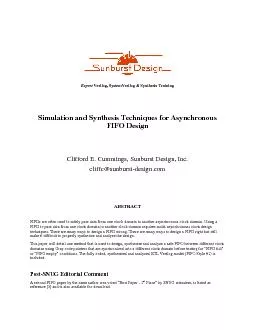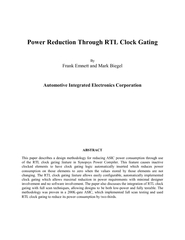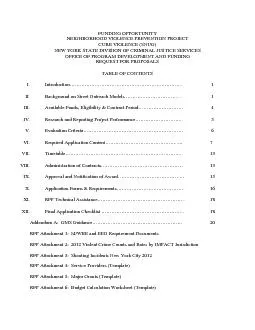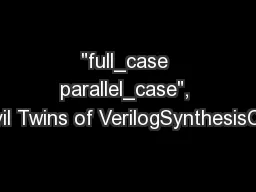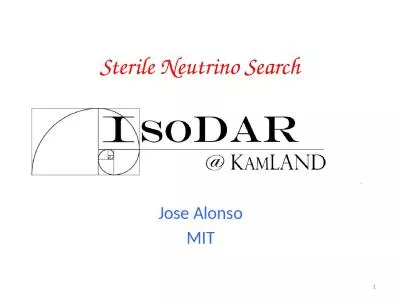PDF-SNUG San Jose 2002Simulation and Synthesis Techniques forRev 1.2Asynch
Author : min-jolicoeur | Published Date : 2015-11-07
SNUG San Jose 2002Simulation and Synthesis Techniques forRev 12Asynchronous FIFO Designcount value from one clock domain to another is problematic because every
Presentation Embed Code
Download Presentation
Download Presentation The PPT/PDF document "SNUG San Jose 2002Simulation and Synthes..." is the property of its rightful owner. Permission is granted to download and print the materials on this website for personal, non-commercial use only, and to display it on your personal computer provided you do not modify the materials and that you retain all copyright notices contained in the materials. By downloading content from our website, you accept the terms of this agreement.
SNUG San Jose 2002Simulation and Synthesis Techniques forRev 1.2Asynch: Transcript
Download Rules Of Document
"SNUG San Jose 2002Simulation and Synthesis Techniques forRev 1.2Asynch"The content belongs to its owner. You may download and print it for personal use, without modification, and keep all copyright notices. By downloading, you agree to these terms.
Related Documents

